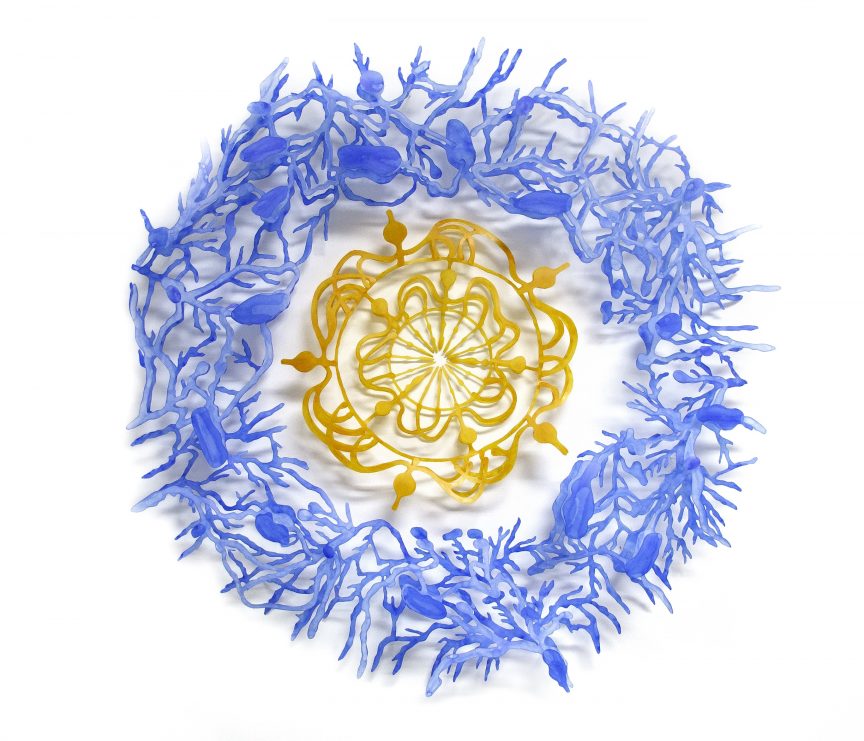Name: Rebecca Kamen
Which came first in your life, the science or the art?
Immense curiosity and the process of discovery serve as a catalyst for the development of my artwork. A passion for science developed at a young age while exploring mysterious micro and macro worlds through the lens of a small microscope and a cardboard telescope. My first chemistry set also fuelled a scientific curiosity planting seeds that, years later, sparked the creation of Divining Nature: An Elemental Garden. A large art installation whose layout has been inspired by a garden of atomic flowers, Divining Nature is informed by the electron orbital patterns of the naturally occurring elements in the periodic table. Shapes created by these electron orbital patterns are based on the same principals of Sacred Geometry that have inspired the Fibonacci spiral of the installation layout and are found in all aspects of nature. Divining Nature, created in 2009, continues to inspire both scientific and non- scientific audiences to view chemistry through a new lens.
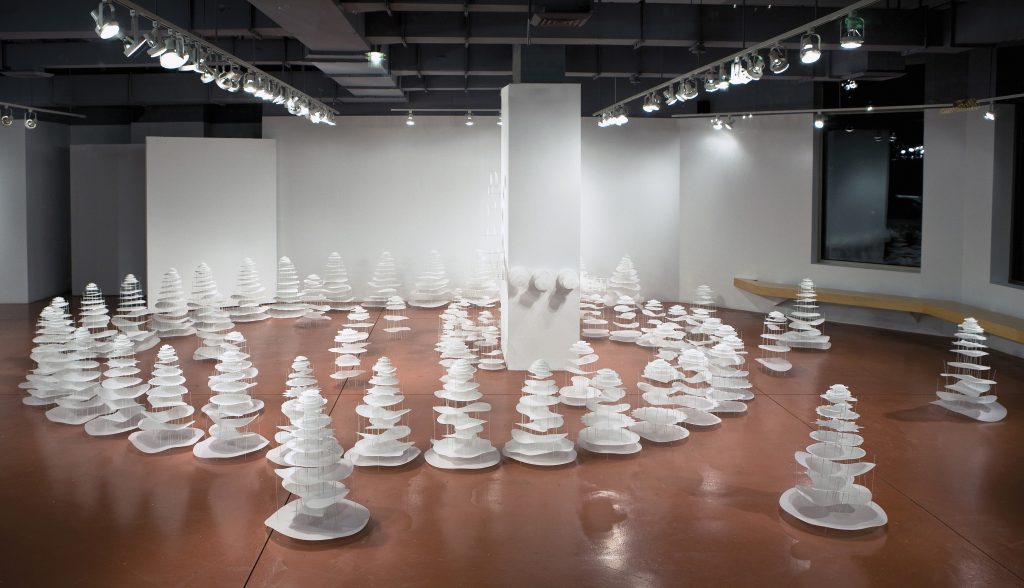
Sound Design by Susan Alexjander | Photo Credit: Angie Seckinger
Which sciences relate to your art practice?
The development of my artwork seeks “the truth” through observation. It is informed by wide ranging research into cosmology, history, and philosophy, and by connecting common threads that flow across various scientific fields to capture and re-imagine what the scientists see. Research venues have included the Center for Astrophysics at Harvard University, the Kavli Institute at Massachusetts Institute of Technology, Rochester Institute of Technology, and at the National Institutes of Health, where I served as artist in residence in neuroscience in 2012.
Investigating diverse scientific special collections ranging from cosmology to neuroscience has also enabled me to discover similarities of patterns at the micro and macro level, which continues to inspire the development of my art/science work.

Photo Credit: Greg Staley
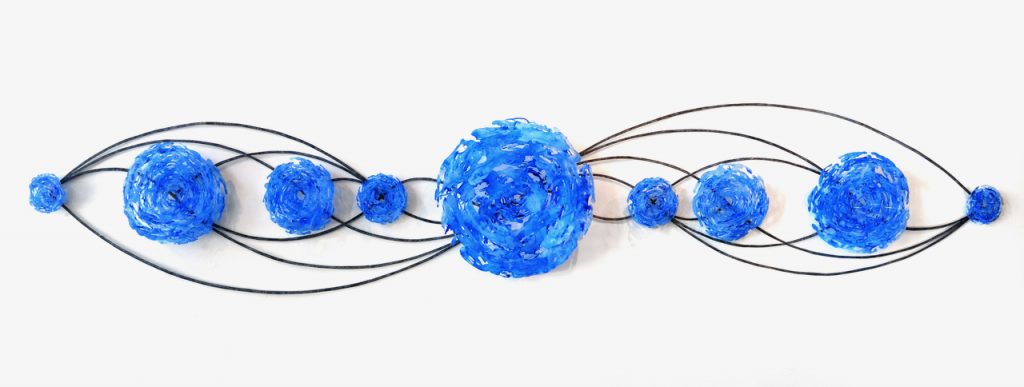
Photo Credit: Mimi Xang Ho
What materials do you use to create your artworks?
Mylar provides the perfect material for the creation of my work. The material’s ability to be cut easily and its translucent nature—which can be left in its natural state or painted—provide a perfect substrate to capture the mystery and dynamics of the complexity systems that my work explores.
Artwork/Exhibition you are most proud of:
Art installations continue to create exciting and unique ways to share scientific discoveries. Divining Nature: An Elemental Garden, Portal, and NeuroCantos provide opportunities for audiences to contemplate scientific phenomena in new ways. NeuroCantos, a multi-media, collaborative art installation explores the dynamics and poetics of inner and outer space. Through sculpture, poetry, sound, and video projections, the installation serves as a catalyst to re-imagine how patterns at different scales create new relationships between micro and macro worlds.
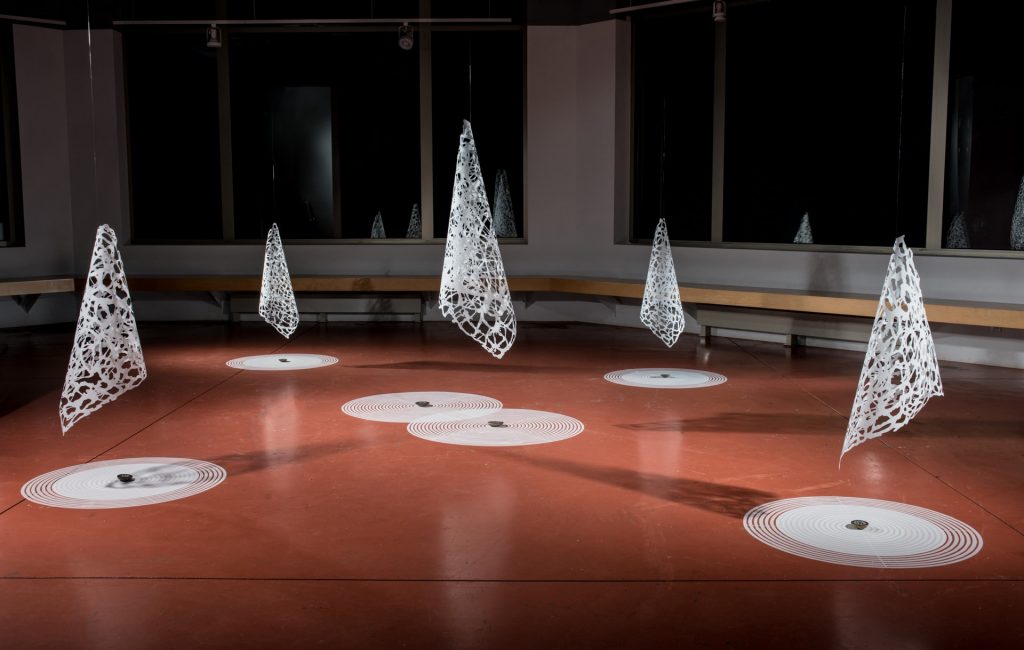
Sound Design by Susan Alexjander | Photo Credit: Pete Duval

Sound Design by Susan Alexjander | Photo Credit: Pete Duval
Which scientists and/or artists inspire and/or have influenced you?
Each art installation mentioned above has been influenced by a specific scientist and their research. Dmitri Mendeleev’s vision of the periodic table of elements was the catalyst for Divining Nature: An Elemental Garden. Albert Einstein’s research of general relativity and black holes provided the creative spark for the Portal installation. Finally, the rare opportunity to research and examine the drawing archives of neuro-anatomist Santiago Ramon y Cajal in Madrid in 2012 inspired the creation of NeuroCantos.
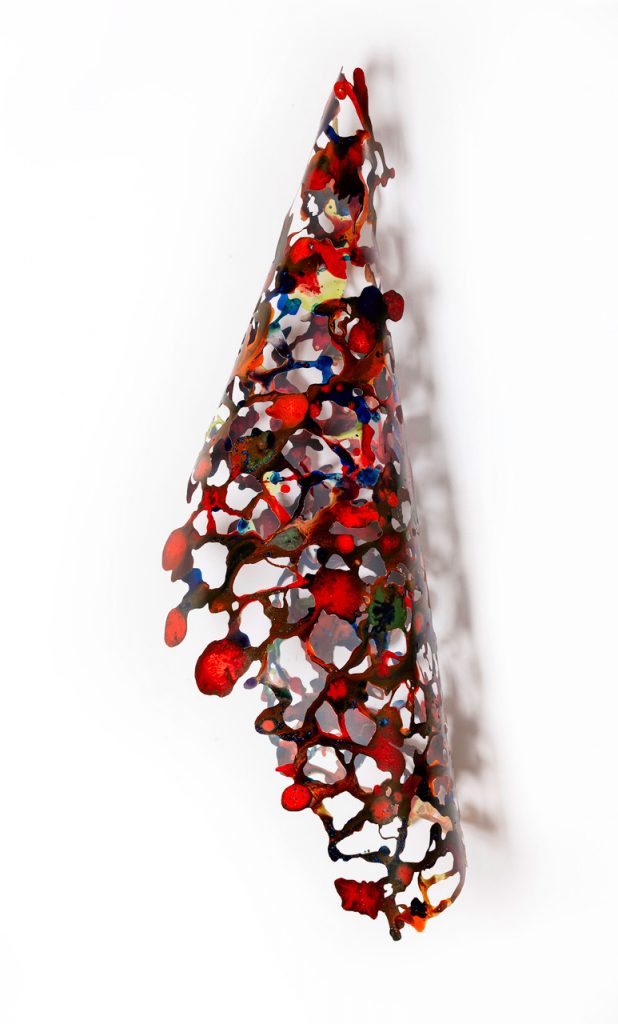
Photo Credit: Mimi Xang Ho

Photo Credit: Mimi Xang Ho
Is there anything else you want to tell us?
A final note: my passion for the exploration of outer space has manifested into a new project titled PLOT. A collaborative art video, PLOT celebrates the 50th anniversary of Apollo 11 and the spirit of exploration and discovery. You can find out more about this project at rebeccakamen.com/gallery/plot/.
Links (social media, website, etc): Artist Website
Share this Post

